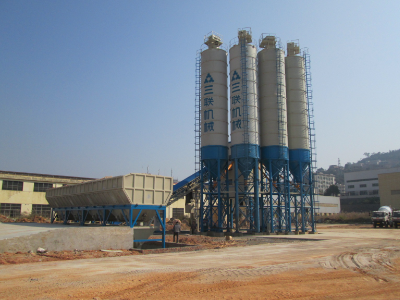A concrete plant, also known as a batch plant or batching plant or a concrete batching plant, is equipment that combines various ingredients to form concrete. Some of these inputs include water, air, admixtures, sand, aggregate (rocks, gravel, etc.), fly ash, silica fume, slag, and cement. There are two main types of concrete plants: Dry mix plants and Wet mix plants, and also plants that contain both a transit mix side and a central mix side while utilizing common material storage points. A concrete plant can have a variety of parts and accessories, including: mixers (either tilt drum or horizontal or in some cases both), cement batchers, aggregate batchers, conveyors, radial stackers, aggregate bins, cement bins, heaters, chillers, cement silos, batch plant controls, and dust collectors.

The heart of the concrete batching plant is the mixer, and there are many types of mixers such as Tilt Drum, Pan, Planetary, Single Shaft and Twin shaft mixer. The twin shaft mixer can ensure an even mixture of concrete through the use of high horsepower motors, while the tilt mixer offers a consistent mix with much less maintenance labor and cost. In North America, the predominant central mixer type is a tilt drum style, while in Europe a Twin Shaft is more prevalent. A Pan or Planetary mixer is more common at a precast plant. Aggregate bins have 2 to 6 compartments for storage of various sand and aggregate (rocks, gravel, etc.) sizes, while cement silos are typically one or two compartments, but at times up to 4 compartments in a single silo. Conveyors are typically between 24-48 inches wide and carry aggregate from the ground hopper to the aggregate bin, as well as from the aggregate batcher to the charge chute.
Typical plants are used for ready mix, civil infrastructure, and precast applications.
